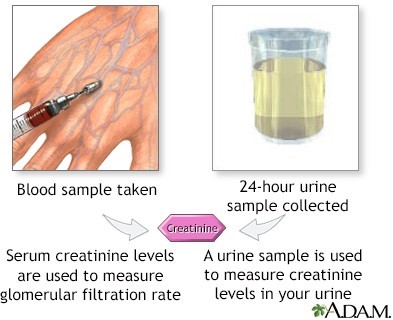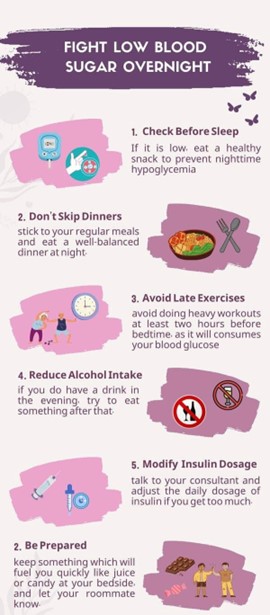An unlicensed assistive personnel (UAP) reports that a client's right hand and fingers spasm when taking the blood pressure using the same arm.
After confirming the presence of the spasms, which action should the nurse take?
Review the client's serum calcium level.
Administer an as-needed (PRN) antianxiety medication.
Ask the UAP to take the blood pressure in the other arm.
Tell the UAP to use a different sphygmomanometer.
The Correct Answer is C
Choice A rationale:
Review the client's serum calcium level. Rationale: Checking the client's serum calcium level is not the most appropriate action in this situation. Hand and finger spasms during blood pressure measurement are more likely due to discomfort or muscle tension than a calcium deficiency. There is no immediate indication that the client's calcium level needs to be assessed urgently.
Choice B rationale:
Administer an as-needed (PRN) antianxiety medication. Rationale: Administering an antianxiety medication is not indicated in this situation. The client's symptoms of hand and finger spasms during blood pressure measurement are not likely related to anxiety. It is essential to address the immediate issue of obtaining an accurate blood pressure reading.
Choice C rationale:
Ask the UAP to take the blood pressure in the other arm. Rationale: This is the correct answer. When the UAP reports spasms in the client's right hand and fingers while taking blood pressure using the same arm, the nurse should prioritize obtaining an accurate blood pressure measurement. Asking the UAP to use the other arm can help ensure a more reliable reading. Muscle spasms in the arm being used for blood pressure measurement can lead to inaccurate results.
Choice D rationale:
Tell the UAP to use a different sphygmomanometer. Rationale: In this scenario, the issue appears to be related to muscle spasms in the client's hand and fingers rather than the sphygmomanometer itself. Changing the sphygmomanometer is unlikely to resolve the problem. The priority is to obtain an accurate blood pressure reading by addressing the spasms in the arm being used.
Nursing Test Bank
Naxlex Comprehensive Predictor Exams
Related Questions
Correct Answer is B
Explanation
Serum creatinine is the most important laboratory value to review before administering an antibiotic that can cause nephrotoxicity. Nephrotoxicity is an alteration in the function of the kidney due to exposure to certain drugs or toxins.
It can be assessed by measuring the glomerular filtration rate (GFR), which is the rate of clearance of a substance from the blood by the kidneys. Serum creatinine is a waste product of muscle metabolism that is freely filtered by the glomeruli and not reabsorbed or secreted by the tubules.
Therefore, it is a reliable indicator of GFR and renal function. An increase in serum creatinine indicates a decrease in GFR and renal function, which may be caused by nephrotoxic drugs.
The other laboratory values are not directly related to nephrotoxicity or GFR:
- Serum calcium: This may be affected by renal function, but it is not a sensitive or specific marker of nephrotoxicity. It may be altered by other factors such as vitamin D, parathyroid hormone, and bone metabolism.
- Hemoglobin and hematocrit: These may be affected by renal function, but they are not sensitive or specific markers of nephrotoxicity. They may reflect the erythropoietin production by the kidneys, which stimulates red blood cell production in the bone marrow. However, they may also be influenced by other factors such as blood loss, hydration status, and iron deficiency.
- White blood cell count (WBC): This is not related to nephrotoxicity or GFR. It may reflect the presence of infection or inflammation, which may be a cause or a consequence of renal impairment, but it is not a direct measure of renal function.

Correct Answer is B
Explanation
The correct answer and explanation is:
b) Consecutive evening serum glucose greater than 260 mg/dL.
This is the finding that the PN should document as evidence that the amount of insulin is inadequate for the client with type 1 diabetes mellitus. Consecutive evening serum glucose greater than 260 mg/dL indicates hyperglycemia, which means that the client's blood sugar is too high and not well controlled by the insulin dose.
The PN should report this finding to the healthcare provider and expect a possible adjustment in the insulin regimen.
a) States her feet are constantly cold along with feeling numb.
This is not the finding that the PN should document as evidence that the amount of insulin is inadequate for the client with type 1 diabetes mellitus.
States her feet are constantly cold along with feeling numb may indicate peripheral neuropathy, which is a complication of diabetes that affects the nerves in the feet and legs. It is caused by chronic high blood sugar levels over time, not by a single dose of insulin.
c) A wound on the ankle that starts to drain and becomes painful.
This is not the finding that the PN should document as evidence that the amount of insulin is inadequate for the client with type 1 diabetes mellitus. A wound on the ankle that starts to drain and becomes painful may indicate an infection, which is a risk factor for diabetic clients due to impaired wound healing and immune function. It is not directly related to the insulin dose, although it may affect the blood sugar levels and require more insulin.
d) Reports nausea in the morning but still able to eat breakfast.
This is not the finding that the PN should document as evidence that the amount of insulin is inadequate for the client with type 1 diabetes mellitus. Reports nausea in the morning but still able to eat breakfast may indicate morning sickness, which is a common symptom of pregnancy. It is not related to the insulin dose, although it may affect the blood sugar levels and require more frequent monitoring and adjustment.

Whether you are a student looking to ace your exams or a practicing nurse seeking to enhance your expertise , our nursing education contents will empower you with the confidence and competence to make a difference in the lives of patients and become a respected leader in the healthcare field.
Visit Naxlex, invest in your future and unlock endless possibilities with our unparalleled nursing education contents today
Report Wrong Answer on the Current Question
Do you disagree with the answer? If yes, what is your expected answer? Explain.
Kindly be descriptive with the issue you are facing.
